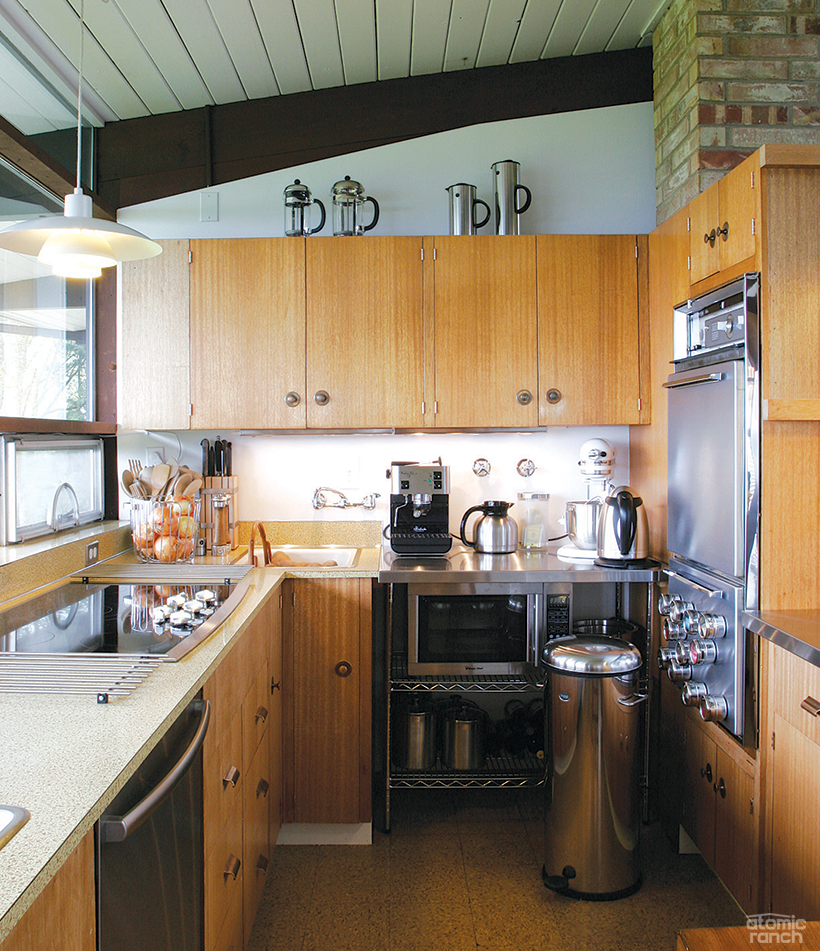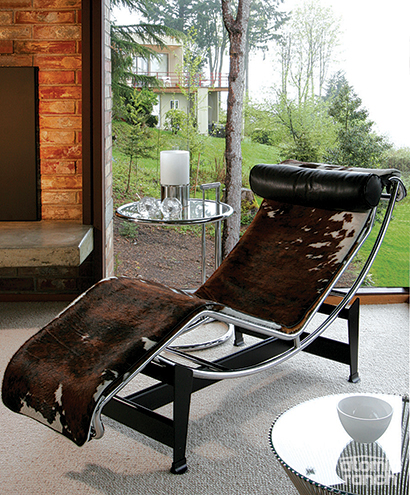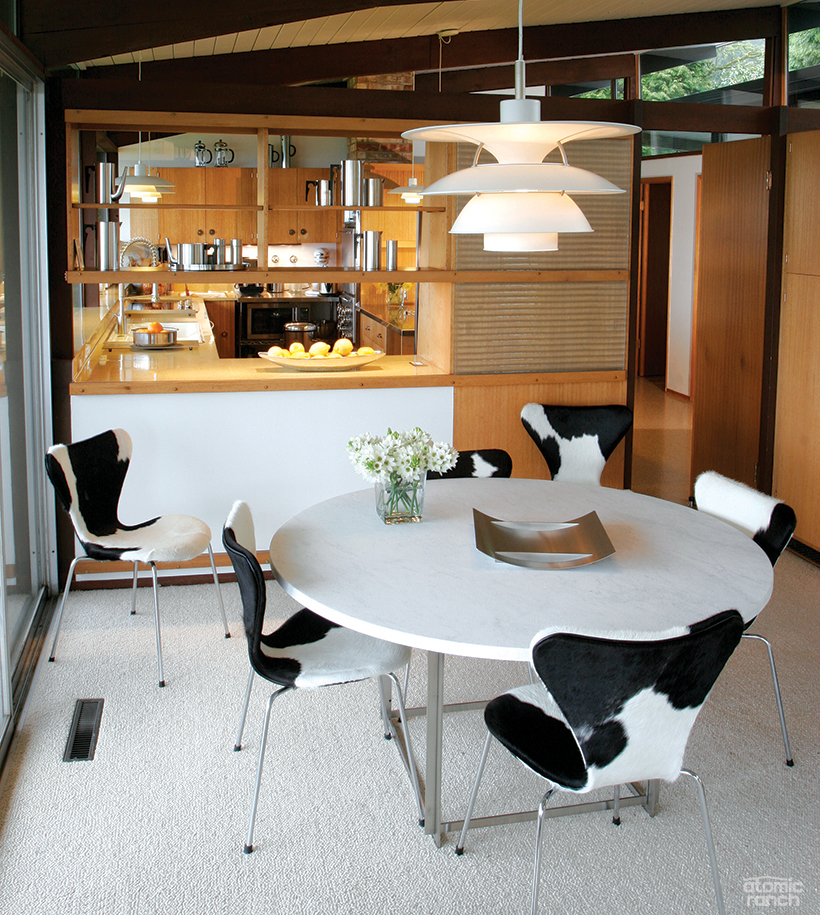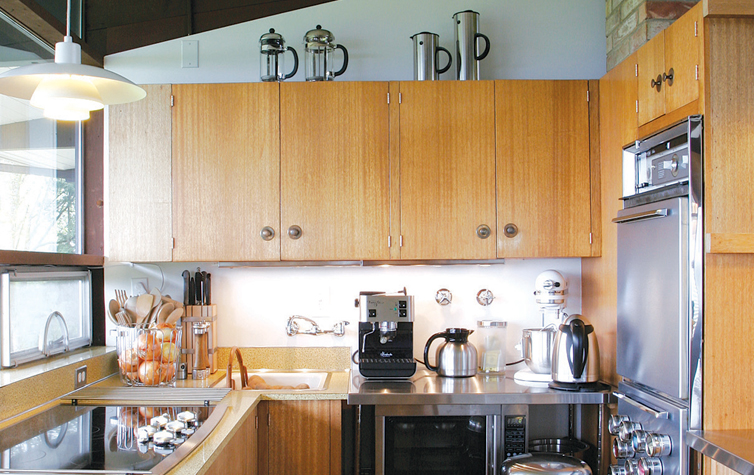
After moving across countries to live in their newly purchased Wendell Lovett home (part 1), The Mercers tackled an extensive list of repair projects to beautify their midcentury paradise (part 2), but that was only half of the embellishing process. The rest was all about furnishing their home.
As interesting as the frame is, the contents are also memorable. Claus admires the work of Poul Kjaerholm, Hans Wegner, Arne Jacobsen, Poul Henningsen and Piet Hein— Danes all—and dips into the Swiss/French pool with a few Le Corbusier pieces from the late ’20s. He attributes their personal taste to growing up in northern Europe.
“Functional materials like steel are heavily used, from your mailbox to your doormat to your outdoor furniture and your coat hangers. People think in clean, simple lines and you get this acquired taste. I’ve personally really grown to appreciate it,” he explains.

“Denmark has a history, a handful of classical architects who thought very functionally and weren’t afraid of trying some materials that were tough to work with back then. Unfortunately, most of their stuff is very pricey.”
“Claus gets very excited—Look how [the designer] did this; it’s all one piece!” Linda interjects. “For me it’s more about the material and the quality. It means a lot to me when things are natural—wool, cotton, glass.”
Claus swings into his topic with vigor, enthusing about the Danish auctions and websites where they’ve purchased many of their pieces. These are shipped over in containers along with “Danish butter cookies, canned hams and salami sticks” in his food lexicon. “There are a couple of websites that will have 250 pieces of Arne Jacobsen this weekend alone. There’ll be 1,000 light fixtures from Poul Henningsen.”
He notes that even with a favorable exchange rate, by 2008 furniture prices on the Danish auction sites had doubled or tripled. “So it’s still not for everybody,” Linda comments about the notion of mainstream modern. “No, it’s not,” Claus admits. “[Furniture like this] used to be in reception areas or the [company] president’s office; if you read the books about the architects, that was never the intention. Making it available to the masses never happened.”
For all their interest in iconic designers, the Mercers aren’t snobs and had IKEA furniture when they were first married as well as now in the kids’ rooms and at their summer home in Denmark. “The Belle Center outside the Copenhagen airport has a permanent exhibition for the Danish furniture industry and an area with nothing but new pieces by designers following in the footsteps of the old designers—attending the same schools, espousing the same ideals—some high end, some doing really simple stuff for IKEA and the like,” says Claus. ”

When you dig deep and ask, Where did this [modern design] start? It’s very apparent that whether [you see a home] in Australia, Japan or some exotic place in Sao Paolo, you’ve got something from Wagner, something from Arne Jacobsen—these [style influences] are everywhere.”












